Search Result
Results for "
ischemic stroke
" in MedChemExpress (MCE) Product Catalog:
1
Biochemical Assay Reagents
1
Isotope-Labeled Compounds
| Cat. No. |
Product Name |
Target |
Research Areas |
Chemical Structure |
-
- HY-107700
-
|
GV 150526A
|
iGluR
|
Cardiovascular Disease
|
|
Gavestinel (GV 150526A) is a potent, selective, orally active and non-competitive antagonist of NMDA receptor. Gavestinel binds to the glycine site of the NMDA receptor, with a pKi of 8.5. Gavestinel can be used for the research of acute ischemic stroke .
|
-
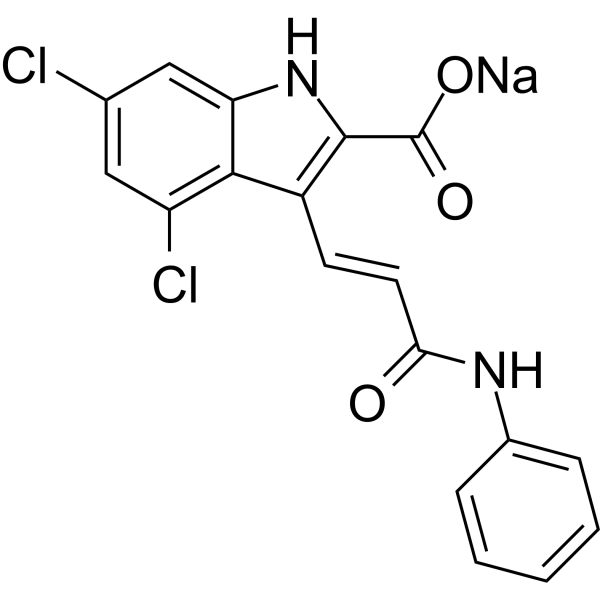
-
- HY-115460
-
-
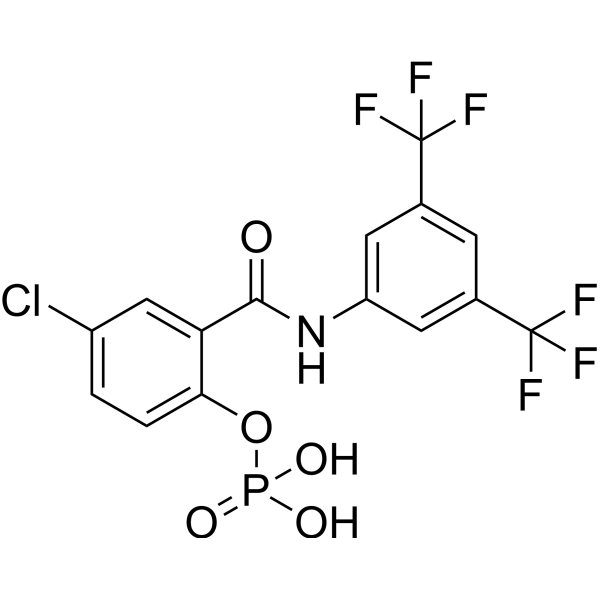
-
- HY-162165
-
|
|
Others
|
Neurological Disease
|
|
Neuroprotective agent 4 (compound 24a) is a novel and effective small molecule antioxidant. Neuroprotective agent 4 has a neuroprotective effect. Neuroprotective agent 4 can be used in the study of ischemic stroke and related diseases .
|
-
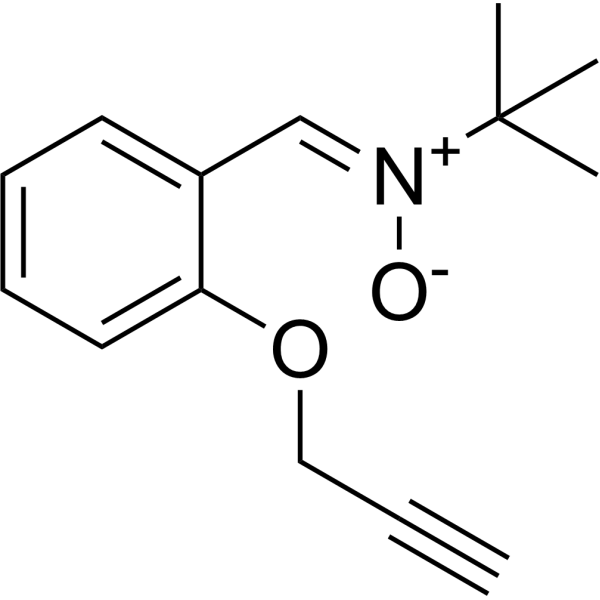
-
- HY-151546
-
|
|
P2X Receptor
|
Neurological Disease
|
|
MRS4596 is a potent and selective P2X4 receptor antagonist with an IC50 value of 1.38 μM for human P2X4 receptor. MRS4596 has neuroprotective and neuro-rehabilitative activities in ischemic stroke model. MRS4596 can be used in research of ischemic stroke .
|
-

-
- HY-124109
-
|
|
HSP
|
Cardiovascular Disease
Neurological Disease
|
|
TRC051384 hydrochloride is a potent inducer of heat shock protein 70 (HSP70). TRC051384 hydrochloride exhibits protective effects against neuronal trauma via inhibition of necroptosis. TRC051384 hydrochloride can be used for the research of ischemic stroke .
|
-
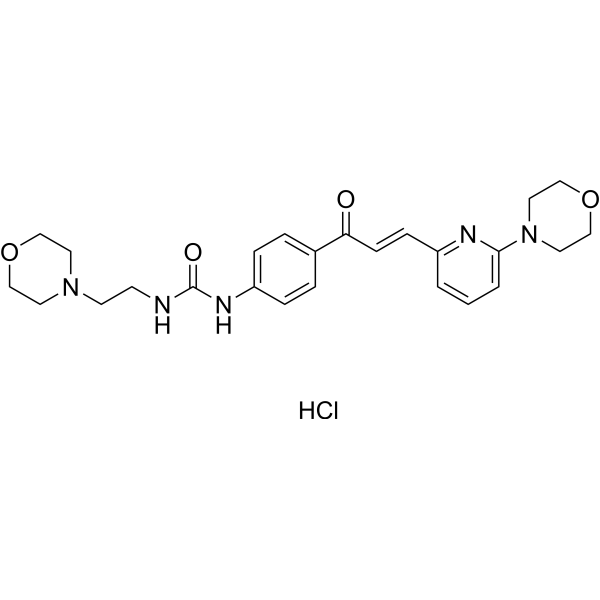
-
- HY-66010A
-
|
|
Calcium Channel
|
Cardiovascular Disease
|
|
Cinepazide is a piperazine derivative and acts as a weak calcium channel blocker. Cinepazide is a potent vasodilator and can be used for the research of cerebrovascular diseases, including ischemic stroke, brain infarct et. al .
|
-
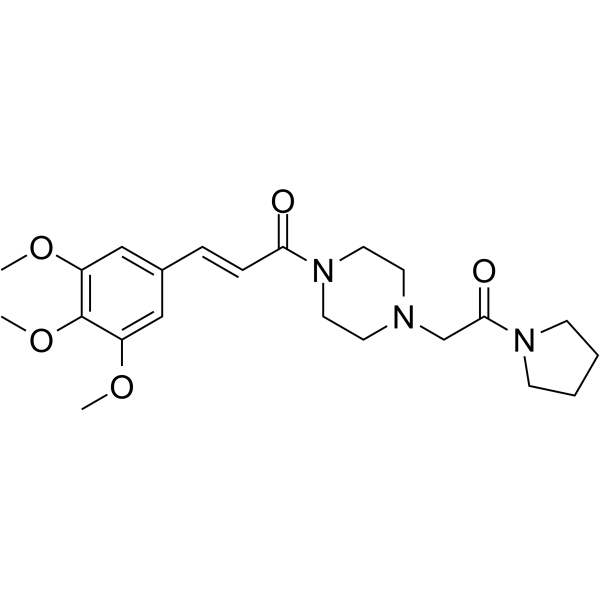
-
- HY-149094
-
|
|
Others
|
Cardiovascular Disease
|
|
Neuroprotective agent 1 (2), a promising neuroprotective agent for the study of ischemic stroke, shows promising neuroprotective activity with the EC50 value of 16.07 μM in the model of glutamate-induced excitotoxicity and 19.30 μM in the model of H2O2-induced oxidative damage .
|
-

-
- HY-149253
-
|
|
Others
|
Neurological Disease
|
|
OY-201 is a potential and BBB-penetrated anti-ischemic stroke agent. OY-201 shows the good safety and neuroprotective activity in both in vitro and in vivo models .
|
-
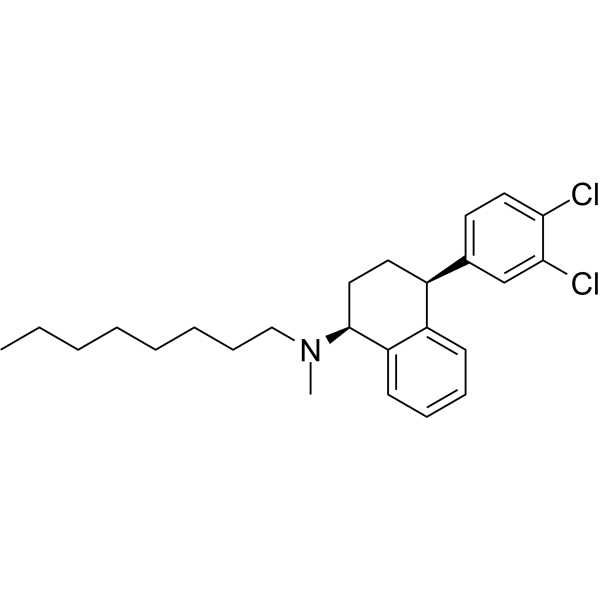
-
- HY-151547
-
|
|
P2X Receptor
|
Neurological Disease
|
|
MRS4719 is a potent P2X4 receptor antagonist with an IC50 value of 0.503 μM for human P2X4 receptor. MRS4719 can reduce infarct volume and reduce brain atrophy, showing neuroprotective and neuro-rehabilitative activities in ischemic stroke model. MRS4719 also reduces ATP-induced [Ca 2+]i influx in primary human monocyte-derived macrophages. MRS4719 can be used to research ischemic stroke .
|
-
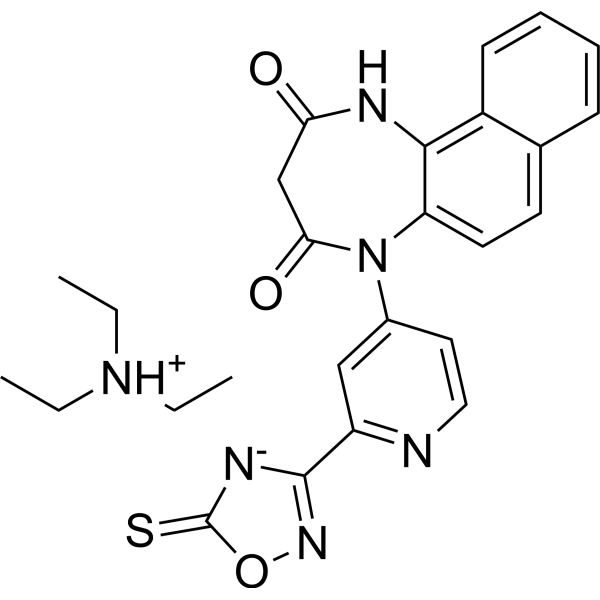
-
- HY-66010
-
|
MD-67350
|
Calcium Channel
|
Cardiovascular Disease
|
|
Cinepazide Maleate (MD-67350) is a piperazine derivative and acts as a weak calcium channel blocker. Cinepazide Maleate is a potent vasodilator and can be used for the research of cerebrovascular diseases, including ischemic stroke, brain infarct et. al .
|
-
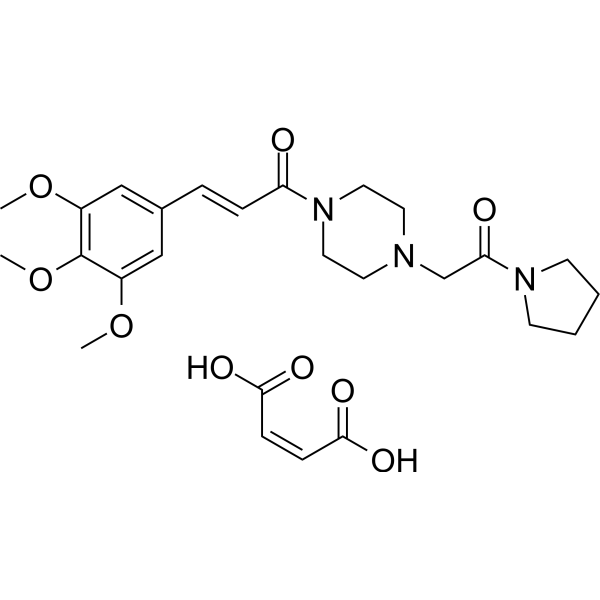
-
- HY-155355
-
|
|
iGluR
|
Neurological Disease
|
|
LY836 is an orally active neuroprotective agent. LY836 significantly blocks PSD95-nNOS association in cortical neurons. LY836 can be used in study ischemic stroke .
|
-
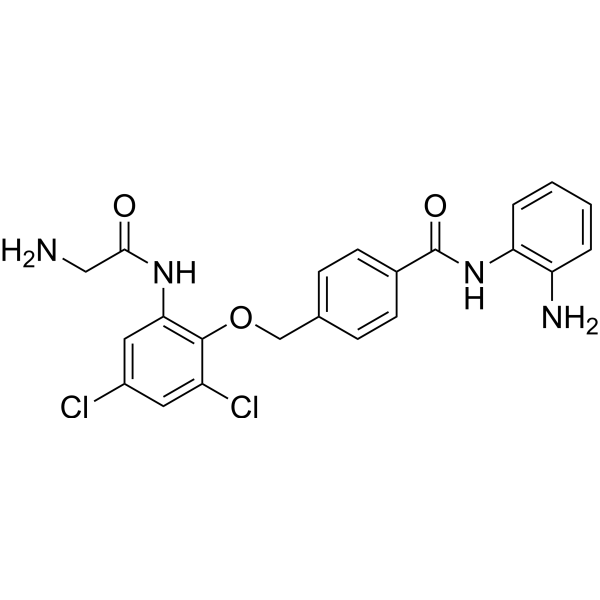
-
- HY-126049
-
|
(S)-(-)-Oxiracetam; (S)-ISF2522
|
Apoptosis
|
Neurological Disease
|
|
(S)-oxiracetam (S-ORC) is an inhibitor targeting apoptosis. S-ORC reduces brain infarct size and lessens neurological dysfunction in middle cerebral artery occlusion/reperfusion (MCAO/R) models. S-ORC prevents neuronal apoptosis via activating PI3K/Akt/GSK3β signaling pathway via α7 nAChR after ischemic stroke. S-ORC can prevent neuronal death after ischemic stroke .
|
-

-
- HY-145706
-
|
|
Adenosine Receptor
|
Neurological Disease
|
|
A2A/A1 AR antagonist-1 (compound 1a) is dual potent A2A/A1 AR antagonist with Kis of 5.58 and 24.2 nM, respectively. A2A/A1 AR antagonist-1 has the potential for the research of ischemic stroke .
|
-

-
- HY-P5117
-
|
|
Toll-like Receptor (TLR)
|
Neurological Disease
|
|
TAT-CIRP is a a small peptide, refers to Trans-trans-activating (Tat)-cold-inducible RNA binding protein. TAT-CIRP is an inhibitor of myeloid differentiation protein 2 (MD2). TAT-CIRP exhibits robust neuroprotection against ischemic and hemorrhagic stroke in mice .
|
-

-
- HY-19274
-
-
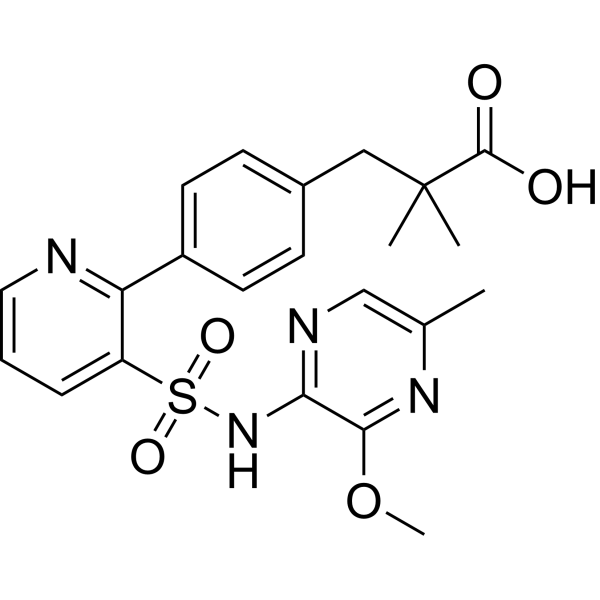
-
- HY-107815
-
|
|
GSK-3
|
Neurological Disease
|
|
CHIR 98024 (Compound L) is a glycogen synthase kinase 3 (GSK3) inhibitor with an EC50 of 0.2566 μM .
|
-

-
- HY-108865
-
|
Actilyse; Activase
|
Others
|
Cardiovascular Disease
|
|
Alteplase (Actilyse; Activase), a tissue plasminogen activator prepared by recombination, is a thrombolytic agent that play important roles in acute ischemic stroke, pulmonary embolism, acute myocardial infarction, and occluded catheters .
|
-

-
- HY-101712
-
|
|
HSP
|
Neurological Disease
|
|
TRC051384 is a potent inducer of heat shock protein 70 (HSP70). TRC051384 exhibits protective effects against neuronal trauma via inhibition of necroptosis. TRC051384 can be used for the research of ischemic stroke .
|
-
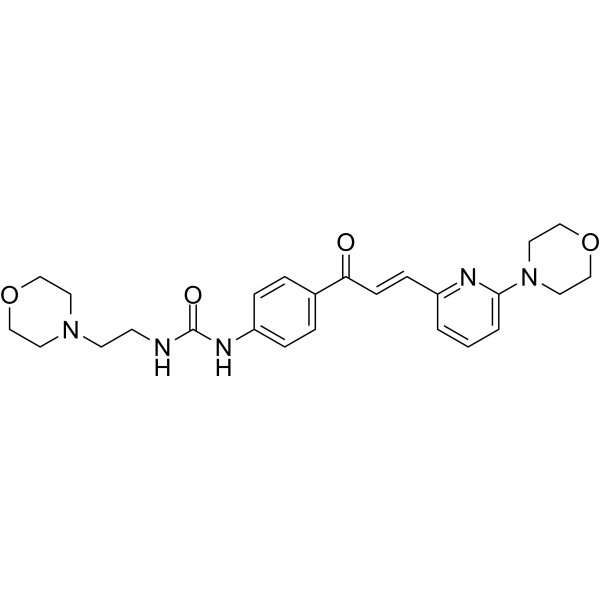
-
- HY-NP001
-
|
cBSA, chemically modified cationic bovine serum albumin
|
Biochemical Assay Reagents
|
Neurological Disease
|
|
Cationic Bovine Serum Albumin is a 583 amino acid protein consisting of three homologous full alpha structural domains. Cationic Bovine Serum Albumin has remarkable neuroprotective effects on ischemic stroke when in combination with Tanshinone IIA (HY-N0135) .
|
-
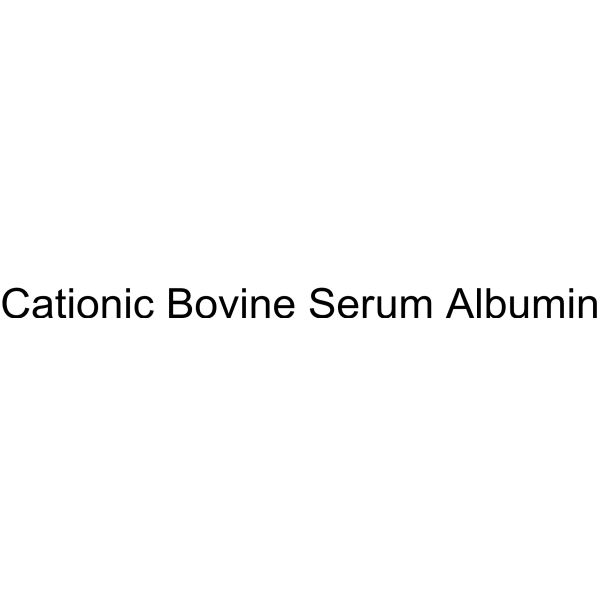
-
- HY-101317
-
|
SB-205607 dihydrobromide
|
|
|
|
TAN-67 (SB-205607) dihydrobromide is a potent and selective nonpeptidic δ-opioid receptor agonist with a Ki value of 0.647 nM. TAN-67 dihydrobromide has neuroprotective effect. TAN-67 dihydrobromide can be used in research of ischemic stroke .
|
-
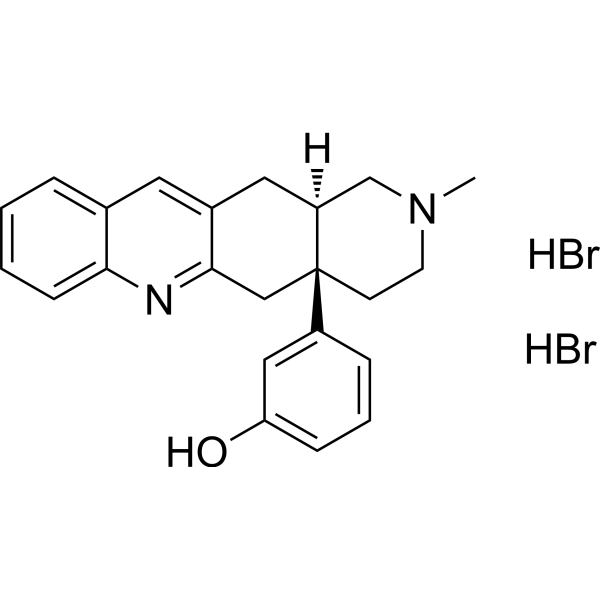
-
- HY-P5883
-
|
tatM2NX
|
TRP Channel
|
Neurological Disease
|
|
TAT-M2NX (tatM2NX) is a TRPM2 inhibitor with specific neuroprotective activity in male mice. TAT-M2NX can be used to study ischemic neuronal damage .
|
-

-
- HY-125859A
-
|
MPO
|
Bacterial
|
Inflammation/Immunology
|
|
Myeloperoxidase, human white blood cells (MPO) is a peroxidase. In Myeloperoxidase, human white blood cells mediate oxidative stress by promoting the production of reactive oxygen species (ROS) and active nitrogen (RNS), regulating the polarization and inflammation-related signaling pathways of microglia and neutrophils. Myeloperoxidase, human white blood cells has antibacterial activity .
|
-
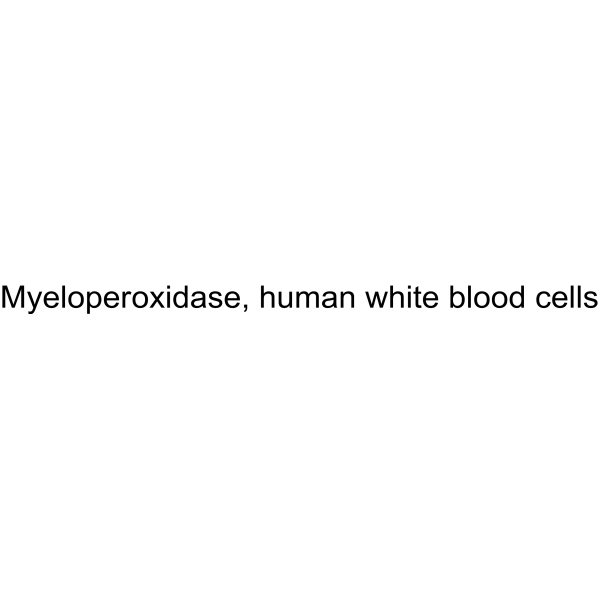
-
- HY-105084
-
|
|
Others
|
Neurological Disease
|
|
Lubeluzole is a neuroprotective anti-ischemic compound. Lubeluzole, but not its (-)-R-isomer, protects against sensorimotor deficits provoked by photochemical stroke in rats. Lubeluzole inhibited glutamate-stimulated guanosine 3',5'-cyclic monophosphate production with an IC50 of 37 nM. Lubeluzole also has the potential for developing a novel class of antibacterial adjuvants endowed with spasmolytic activity .
|
-

-
- HY-124304
-
|
LOE-908
|
TRP Channel
SARS-CoV
|
Neurological Disease
|
|
Pinokalant is a broad-spectrum and non-selectivecation channel inhibitor. Pinokalant significantly reduces cortical infarct volume. Pinokalant o improves the metabolic and electrophysiologic status of the ischemic penumbra. Pinokalant reduces lesion size on magnetic resonance images in the acute phase following middle cerebral artery occlusion in rats. Pinokalant has the potential for the research of stroke. Pinokalant also shows anti-SARS-CoV-2 activity .
|
-
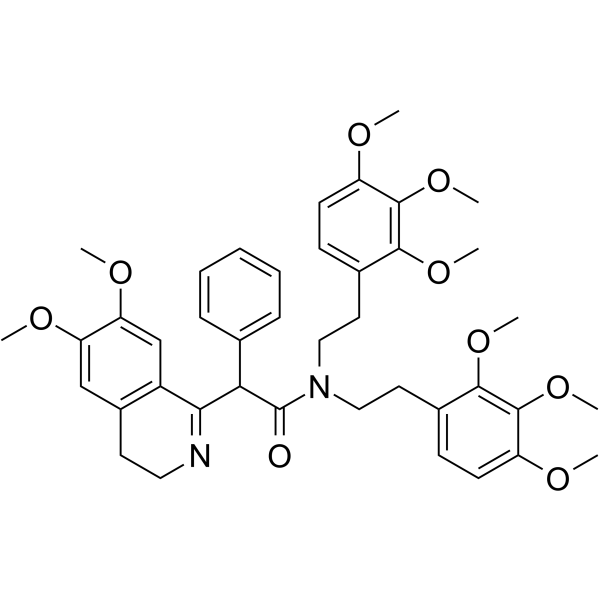
-
- HY-N0361
-
-
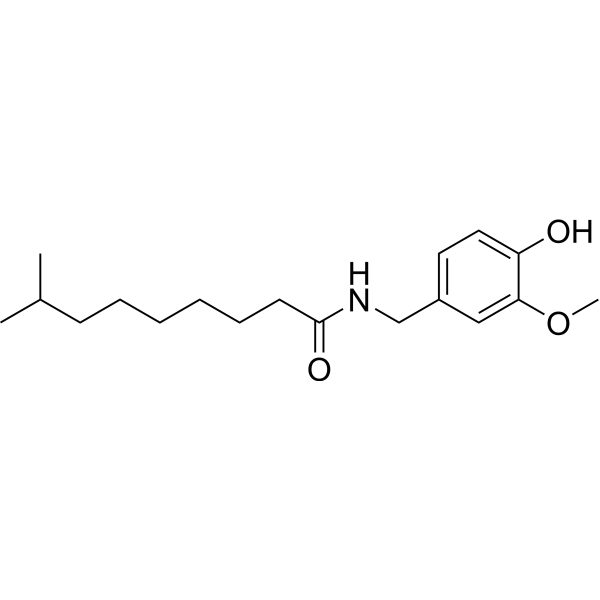
-
- HY-139598
-
|
|
Phospholipase
|
Cardiovascular Disease
|
|
LFHP-1c is an PGAM5 inhibitor with neuroprotective activity in brain ischemic stroke. LFHP-1c protects blood-brain barrier integrity from ischemia-induced injury. LFHP-1c binds to endothelial PGAM5 to inhibit the activity of PGAM5 phosphatase and the interaction of PGAM5 with NRF2. LFHP-1c exhibits in vitro and in vivo protection .
|
-
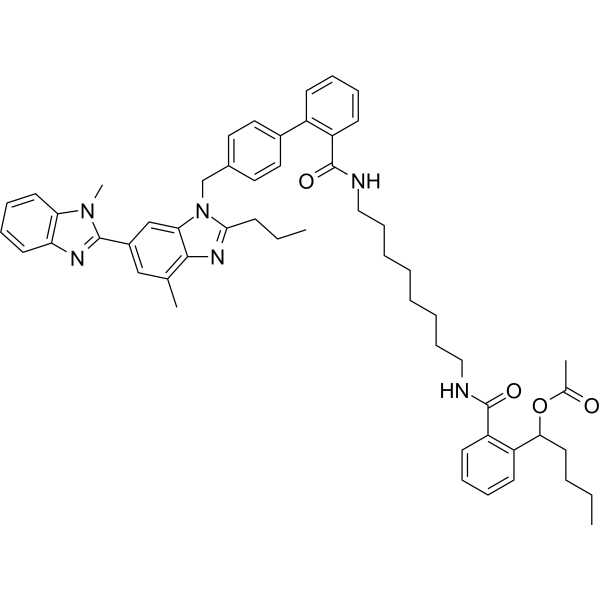
-
- HY-P5754
-
|
|
Apoptosis
|
Neurological Disease
|
|
TAT-NEP1-40 is a BBB-penatrable peptide. TAT-NEP1-40 protects PC12 cells against oxygen and glucose deprivation (OGD), and promotes neurite outgrowth. TAT-NEP1-40 also improves ischemia-induced neurologic outcomes by inhibiting cell apoptosis in ischemic brains. TAT-NEP1-40 can be used for research of CNS injuries, such as axonal regeneration and functional recovery after stroke .
|
-

-
- HY-155997
-
|
|
COX
|
Inflammation/Immunology
|
|
Anti-inflammatory agent 56 (Compound 9) is a selective COX-2 inhibitor (IC50: 0.54 μM). Anti-inflammatory agent 56 has anti-oxidant and anti-inflammatory effects. Anti-inflammatory agent 56 inhibits oxidative stress induced cell death. Anti-inflammatory agent 56 inhibits oxidative stress and neuroinflammation by inhibiting Keap1, COX-2 and iNOS. Anti-inflammatory agent 56 has low acute toxicity in mice (LD50: 1000 mg/kg) .
|
-
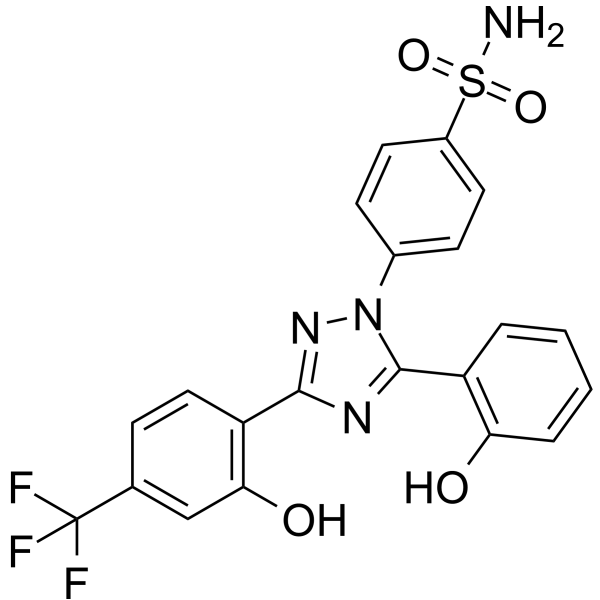
-
- HY-P3012
-
|
|
Cathepsin
|
Inflammation/Immunology
|
|
Cathepsin G acts as a potent agonist of human platelet activation leading to their aggregation., and can be used for screening of relevant inhibitors .
|
-

-
- HY-N8931
-
|
Lithospermic acid monomethyl ester
|
Akt
|
Neurological Disease
|
|
Monomethyl lithospermate activates the PI3K/AKT pathway, which plays a protective role in nerve injury. Monomethyl lithospermate can improve the survival ability of SHSY-5Y cells, inhibit the breakdown of mitochondrial membrane potential (MMOP) and inhibit cell apoptosis. Monomethyl lithospermate also reduced the level of oxidative stress in the brain tissue of rats with middle artery occlusion (MCAO) and improved nerve damage in rats with ischemic stroke (IS) .
|
-

-
- HY-N0361S
-
|
|
Isotope-Labeled Compounds
|
Others
|
|
Dihydrocapsaicin-d3is the deuterium labeledDihydrocapsaicin(HY-N0361) . Dihydrocapsaicin, a capsaicin, is a potent and selective TRPV1 (transient receptor potential vanilloid channel 1) agonist. Dihydrocapsaicin reduces AIF, Bax, and Caspase-3 expressions, and increased Bcl-2, Bcl-xL and p-Akt levels. Dihydrocapsaicin enhances the hypothermia-induced neuroprotection following ischemic stroke via PI3K/Akt regulation in rat .
|
-
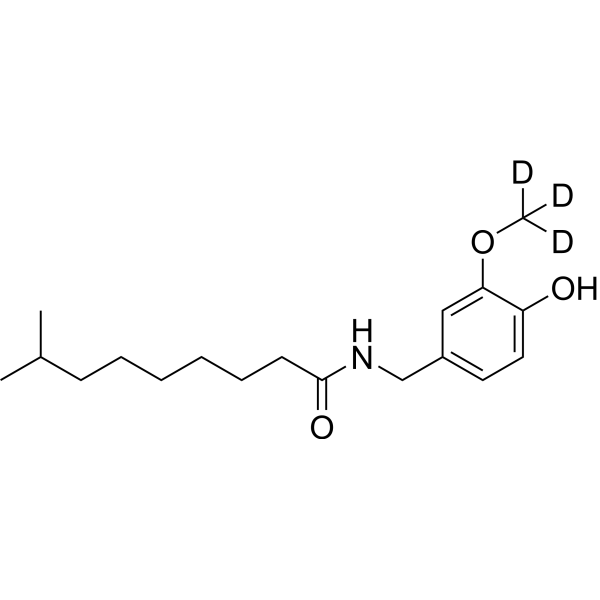
-
- HY-P5754A
-
|
|
Apoptosis
|
Neurological Disease
|
|
TAT-NEP1-40 TFA is a BBB-penatrable peptide. TAT-NEP1-40 TFA protects PC12 cells against oxygen and glucose deprivation (OGD), and promotes neurite outgrowth. TAT-NEP1-40 TFA also improves ischemia-induced neurologic outcomes by inhibiting cell apoptosis in ischemic brains. TAT-NEP1-40 TFA can be used for research of CNS injuries, such as axonal regeneration and functional recovery after stroke .
|
-

-
- HY-109097
-
|
SP-8203
|
MMP
iGluR
|
Neurological Disease
|
|
Otaplimastat (SP-8203), a matrix metalloproteinase (MMP) inhibitor, blocks N-methyl-D-aspartate (NMDA) receptor-mediated excitotoxicity in a competitive manner. Otaplimastat also exhibits anti-oxidant activity. Otaplimastat can be used for the research of brain ischemic injury .
|
-
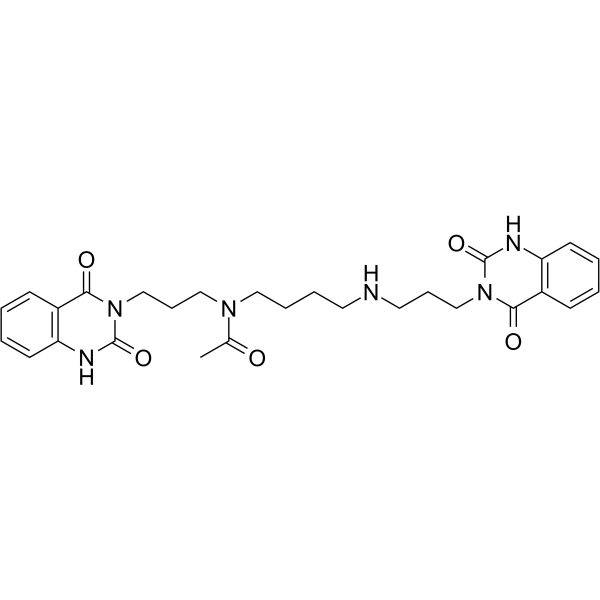
-
- HY-143333
-
-
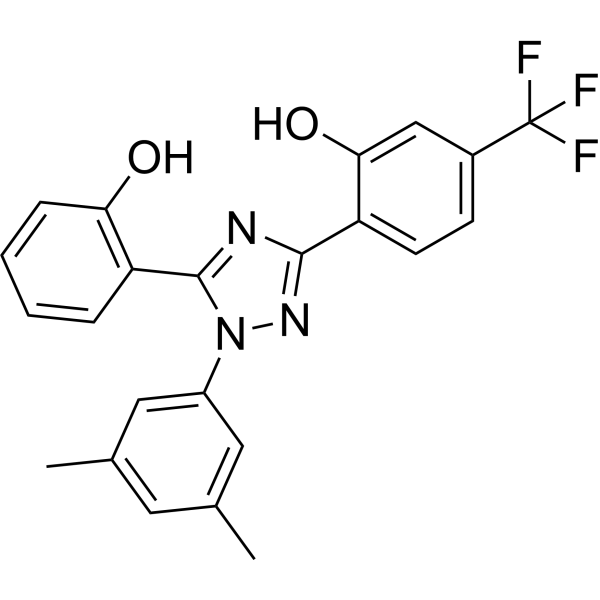
-
- HY-100206
-
|
|
|
|
|
5α-Androstane-3β,5,6β-triol is a neuroprotectant. 5α-Androstane-3β,5,6β-triol can remarkably reverse intracellular acidification and alleviate neuronal injury through the inhibition of AMPK signaling. 5α-Androstane-3β,5,6β-triol remarkably reduced the infarct volume and attenuated neurologic impairment in acute ischemic stroke models of middle cerebral artery occlusion in vivo .
|
-
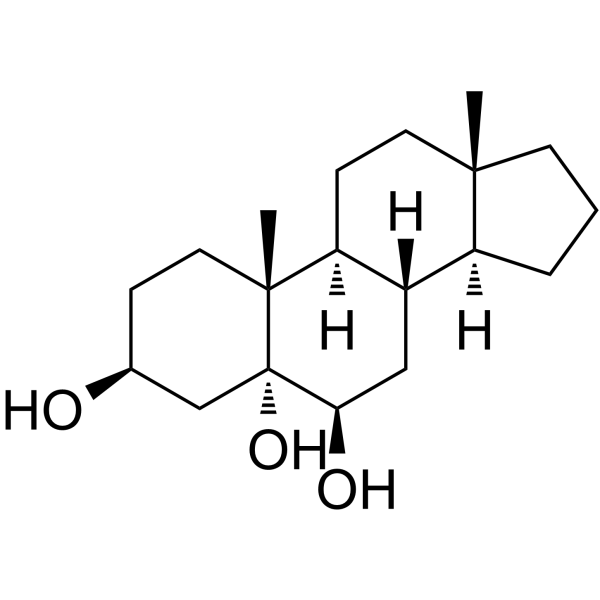
-
- HY-117977
-
|
|
Phosphodiesterase (PDE)
|
Neurological Disease
Inflammation/Immunology
|
|
FCPR03 is a potent and selective phosphodiesterase 4 (PDE4) inhibitor with IC50 values of 60 nM, 31 nM and 47 nM for PDE4 catalytic domain, PDE4B1 and PDE4D7, respectively. FCPR03 displays at least 2100-fold selectivity over other PDEs (PDE1-3 and PDE5-11). FCPR03 has anti-inflammatory, neuroprotective and antidepressant-like effects .
|
-
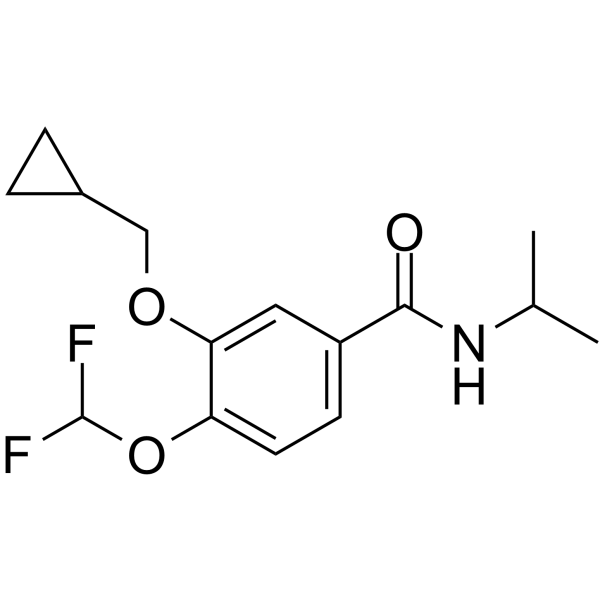
-
- HY-N9347
-
-

-
- HY-107666
-
-
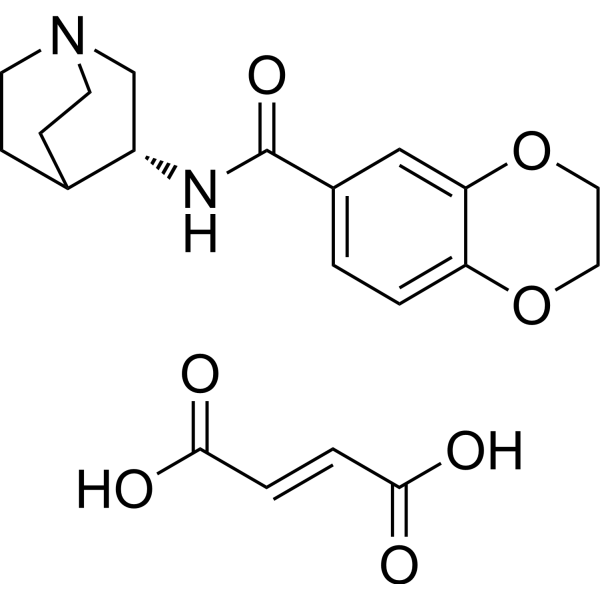
-
- HY-129674
-
|
|
nAChR
|
Neurological Disease
|
|
PHA 568487 free base is a selective alpha 7 nicotinic acetylcholine receptor (α-7 nAchR) agonist. PHA 568487 free base reduces neuroinflammation .
|
-
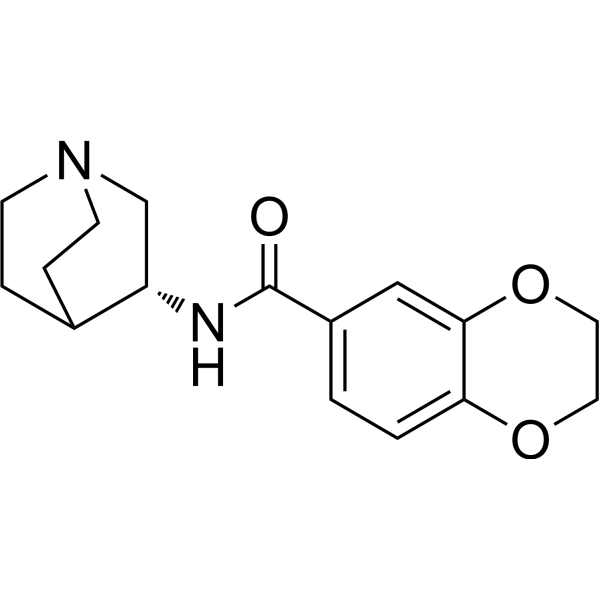
| Cat. No. |
Product Name |
Type |
-
- HY-NP001
-
|
cBSA, chemically modified cationic bovine serum albumin
|
Native Proteins
|
|
Cationic Bovine Serum Albumin is a 583 amino acid protein consisting of three homologous full alpha structural domains. Cationic Bovine Serum Albumin has remarkable neuroprotective effects on ischemic stroke when in combination with Tanshinone IIA (HY-N0135) .
|
| Cat. No. |
Product Name |
Target |
Research Area |
-
- HY-P5117
-
|
|
Toll-like Receptor (TLR)
|
Neurological Disease
|
|
TAT-CIRP is a a small peptide, refers to Trans-trans-activating (Tat)-cold-inducible RNA binding protein. TAT-CIRP is an inhibitor of myeloid differentiation protein 2 (MD2). TAT-CIRP exhibits robust neuroprotection against ischemic and hemorrhagic stroke in mice .
|
-
- HY-P5883
-
|
tatM2NX
|
TRP Channel
|
Neurological Disease
|
|
TAT-M2NX (tatM2NX) is a TRPM2 inhibitor with specific neuroprotective activity in male mice. TAT-M2NX can be used to study ischemic neuronal damage .
|
-
- HY-P5754
-
|
|
Apoptosis
|
Neurological Disease
|
|
TAT-NEP1-40 is a BBB-penatrable peptide. TAT-NEP1-40 protects PC12 cells against oxygen and glucose deprivation (OGD), and promotes neurite outgrowth. TAT-NEP1-40 also improves ischemia-induced neurologic outcomes by inhibiting cell apoptosis in ischemic brains. TAT-NEP1-40 can be used for research of CNS injuries, such as axonal regeneration and functional recovery after stroke .
|
-
- HY-P3012
-
|
|
Cathepsin
|
Inflammation/Immunology
|
|
Cathepsin G acts as a potent agonist of human platelet activation leading to their aggregation., and can be used for screening of relevant inhibitors .
|
-
- HY-P5754A
-
|
|
Apoptosis
|
Neurological Disease
|
|
TAT-NEP1-40 TFA is a BBB-penatrable peptide. TAT-NEP1-40 TFA protects PC12 cells against oxygen and glucose deprivation (OGD), and promotes neurite outgrowth. TAT-NEP1-40 TFA also improves ischemia-induced neurologic outcomes by inhibiting cell apoptosis in ischemic brains. TAT-NEP1-40 TFA can be used for research of CNS injuries, such as axonal regeneration and functional recovery after stroke .
|
| Cat. No. |
Product Name |
Target |
Research Area |
-
- HY-P99644
-
|
ACT017
|
Inhibitory Antibodies
|
Cardiovascular Disease
|
|
Glenzocimab (ACT017) is a Fab fragment of humanized anti-GPVI monoclonal antibody. Glenzocimab inhibits collagen-induced platelet aggregation. Glenzocimab has the potential for the research of acute ischemic stroke .
|
| Cat. No. |
Product Name |
Category |
Target |
Chemical Structure |
| Cat. No. |
Product Name |
Chemical Structure |
-
- HY-N0361S
-
|
|
|
Dihydrocapsaicin-d3is the deuterium labeledDihydrocapsaicin(HY-N0361) . Dihydrocapsaicin, a capsaicin, is a potent and selective TRPV1 (transient receptor potential vanilloid channel 1) agonist. Dihydrocapsaicin reduces AIF, Bax, and Caspase-3 expressions, and increased Bcl-2, Bcl-xL and p-Akt levels. Dihydrocapsaicin enhances the hypothermia-induced neuroprotection following ischemic stroke via PI3K/Akt regulation in rat .
|
-

Your information is safe with us. * Required Fields.
Inquiry Information
- Product Name:
- Cat. No.:
- Quantity:
- MCE Japan Authorized Agent:















































